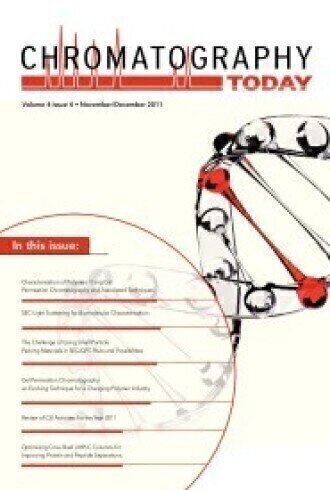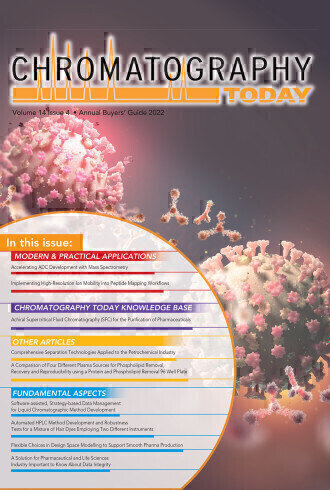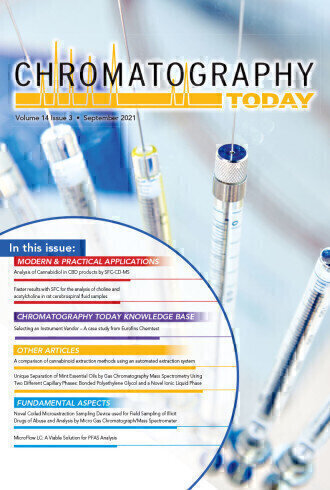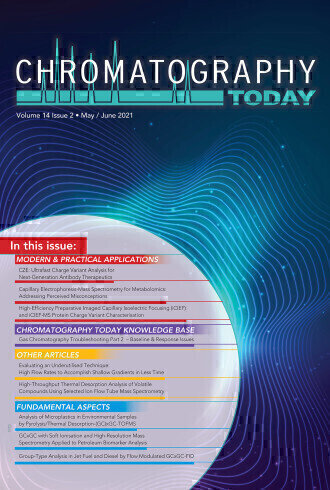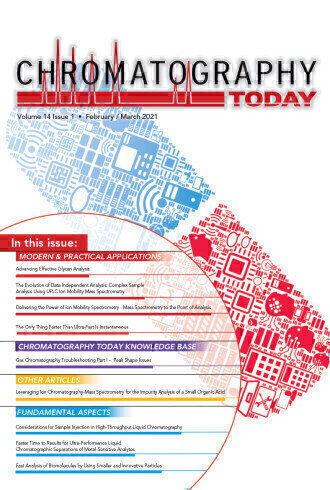Volume 4 Issue 4
Welcome to the sixteenth edition of Chromatography Today, an edition which highlights chromatographic separations of macromolecules, an area of increasing future importance for the characterisation of bio molecules, the development of recyclable materials and materials from renewable sources.
The main review article comes from an old acquaintance Steve Holding from Smithers Rapra who provides an excellent overview of GPC (Gel Permeation Chromatography or SEC (Size Exclusion Chromatography). I do wish we all could agree with a common name!
Steve describes the use of GPC to produce the characteristic molecular weight distribution curves much valued and used by polymer chemists. He talks about the detection options and the various types of GPC - ambient, high temperature, aqueous and low molecular weight and their associated columns. In his summary
he comments on the trend to use mass spectrometry and the growing need for a detector capable of measuring number average molecular weight.
The next article comes from Ben MacCreath and Greg Saunders from Agilent Technologies who look at the area of bio molecule separation. Gel Filtration (yet another variation on SEC/GPC) has been used for many years for the isolation and separation of proteins.
We now are seeing the use of SEC to provide a better understanding of biopolymers and help supply the data required for regulatory compliance. The paper describes the use of SEC with light scattering detection to provide information on both molar mass and molecular
size, and also looks at its potential for the monitoring of aggregation and denaturing in samples that can often occur during drug formulation, production and storage.
In the paper from Thorsten Hofe, John McConville et al they look at the current trend to reduce the particle size of column packings. They explore the challenge of small particle packing materials for GPC, the risks and possibilities.
Unlike typical HPLC type samples, macromolecules because of their size can experience shear degradation as they pass down the column. The relevance of this, column flow rate and solvent viscosity are discussed and examples of separations using aqueous solvents with 10 and 5 um columns are evaluated .
Previous Digital Editions
Events
Apr 22 2025 Kintex, South Korea
Analytica Anacon India & IndiaLabExpo
Apr 23 2025 Mumbai, India
Apr 27 2025 Portland, OR, USA
May 11 2025 Vienna, Austria
May 18 2025 Tempe. AZ, USA
